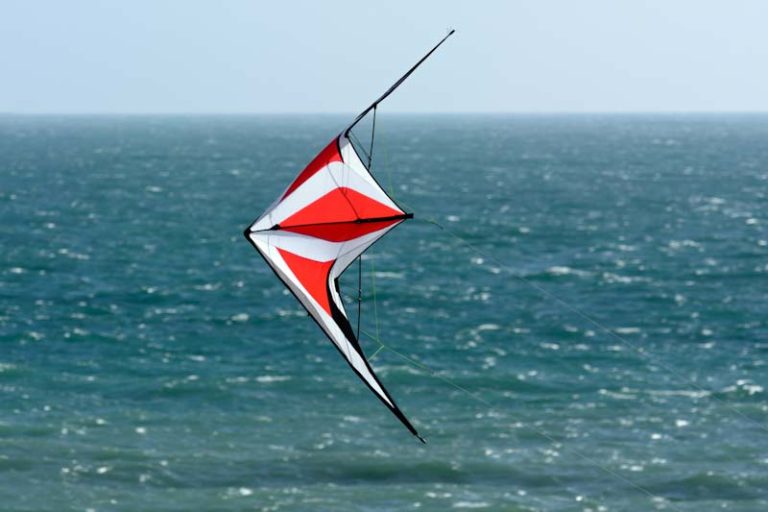How To Store Your Kite
Kite flying sure is a fun activity. But at the end of the day, you’ll need to put it away properly to keep it in good shape. Are you looking for instructions on how to store your kite after a flying session? Well, you’re in luck because this article will guide you on proper kite storage.
To store a kite, make sure that the lines aren’t tangled, then gently fold or roll it, depending on your preference or the manufacturer’s instructions, and place it inside the bag. If you prefer laying the kite open instead, it’s ideal for hanging it on a wall.
After having an exciting flying session with your kite, you must clean it up and store it properly. Kites don’t require much maintenance, but properly keeping them will ensure that your kite will last as long as it should. So, now let’s look at how to store a kite and why it is essential to store them properly.
The Hows And Whys Of Kite Storage
Kite storage is pretty straightforward for most kites, and although each kite flyer has its own preference and techniques for storage, similarities among all of them are likely to appear. Let’s break down the hows and whys of kite storage into a more digestible list.
1. Check For Tangles
When the kite has landed, check that you untangle the kite’s lines before putting it in the bag. Storing your kite with its lines all tangled up will require you to detangle it during your next flying session.
The last thing you would want is to painstakingly detangle your kite’s lines which would likely take a long time and put the lines at risk of breaking or snapping. (source)
2. Disassemble Your Kite
If you intend to store your kite inside a bag, then you need to disassemble it first. How you store your kite will make a difference in its performance, so make sure that you’ve read the manufacturer’s instructions on how to disassemble your kite correctly. Some kites, especially the more advanced types, require specific disassembling procedures.
Most kites have similar disassembling steps. First, disconnect or untie the lines from the kite’s bridles or rods. If your kite has a ribbon in the middle keeping the rods in place, untie that ribbon as well. After that, proceed to remove the rods from the kite’s sail and set it aside. (source)
3. Fold Your Kite
When folding your kite, carefully bring the edges together against the kite’s spine in the center so that all the spars are next to each other. After that, roll the sail neatly and try to avoid wrinkles while doing so.
Wrinkles can damage and break down the sail’s coatings which will result in the sail stretching out. Also, do remember to check your kite’s instruction manual on storing your kite to see if it requires specific folding techniques when storing in a bag. (source)
4. Put The Kite And All Its Parts In The Bag
After disassembling and folding your kite, never forget to put all the kite’s parts and pieces, such as the edges, spars, rods, spreaders, etc., in the bag. Also, try to keep your kite’s pieces close by, especially when you’ve placed them on the ground, and there are other people present, to avoid them getting stolen or mistaken for another person’s kite parts and being stepped on and breaking. (source)
5. Wind Your Kite Lines
The flying lines should be wrapped up on the winder, if you have one, once the kite is safely kept in the bag. From the kite to the handles, wind up your line. The next time you take your kite out to fly, winding from the kite to the handles will make it much more manageable. Stake your handles, unwind your lines, then construct and connect your kite.
How to store your kite also entails winding the lines correctly. So wind your strings in an 8-figure around the winder to avoid twisting in the lines during the process.
Another thing to keep in mind is that if you wind with your right hand while holding the winder with your left, you should unwind with your right hand while holding the winder with your left. It also ensures that the lines do not twist throughout the winding and unwinding operation. When done correctly, your lines should have just a few twists (2-3 at most), and straightening them out should only take a few seconds. (source)
Kites are not indestructible, and most will wear with time and use, but doing even the bare minimum when it comes to how you store your kite will ensure that it will perform well each time you take it out flying. So now that we’ve tackled the hows and whys let’s take a look at the where. Where is the proper place to store a kite?
Where To Store A Kite
After a fun flying session with your kite, make sure to store it correctly so that it lasts for years to come. By this time, you should know that kites are vulnerable to damage when exposed to extreme temperatures or moisture. Hence, understanding where to keep your kite is critical for appropriate kite maintenance.
Kitesurfing kites are made of ripstop nylon, which is a synthetic fiber. Although lightweight, ripstop nylon is very durable and tear-resistant.
However, prolonged exposure to moisture and high temperatures will most likely damage the kite, especially its sails, because nylon as a material is quite sensitive to overly hot or wet environments making it prone to molding and rotting.
For this reason, it’s ideal for storing kites in a cool, dry area away from direct sunlight and avoiding storing them while wet. (source)
When flying your kite at the beach, your kite will likely get wet one way or another. If your kite got wet with saltwater, always keep in mind that before storing it in a bag, rinse it with fresh water first and let it dry completely.
Also, make sure that your kite bag is dry and there is no sand inside. Sand from the beach is abrasive and will wear down bridles and fittings of your kite, so do remember to shake the sand off and dust your bag and your kite after a day at the beach. (source)
When storing in the bag, do your best to avoid snagging the kite’s sail on the bag’s zipper. Ripstop nylon is durable, but when stuffed carelessly into a bag, it will most likely catch on to the zipper and tear.
Store your kite in a bag safely by folding or rolling it properly and running your hand up along the folded kite inside as you zip the bag close. (source)
Summary Of Proper Kite Storage
There’s no need to be a scientist to know how to store your kite correctly. If you’ve reached this point, kite storage, which might have been confusing at first, will now seem like an easy peasy task – and it is.
Some key things you need to keep in mind is that when storing a kite, always check to make sure the kite’s lines are not tangled, and your kite is dry and free from sand or debris, and adequately folded when putting inside a bag, and stored in a cool, dry place away from direct sunlight.
A kite’s performance depends on how it is maintained, particularly how it is stored. The steps to proper kite storage are simple, but they will maintain your kite’s quality and give you tons of memorable kite flying experiences.







